#Mornard
Explore tagged Tumblr posts
Text

House Mornard
Art asset for The Elder Scrolls: Online
*Artist Unknown* If anyone knows the artist comment below
10 notes
·
View notes
Text
Man have we really not been given a new New Life ghost since Deadlands...? (Vague spoilers for all dlc after Deadlands)
No one important died in High Isle, and if they tried to make the vaguely racist Mornard dad into some tragic loss during Old Life Observance I would have laughed. They certainly wouldn't have made Shelreni a ghost for that, she's just a villain no sympathy. And it's too early to get a Gold Road ghost - they always wait at least a year before adding them (not that there were any deaths Again).
But imagine how funny it would have been to have gotten like. Meln this year. He just pops out the soul gem like hey. I'm still here. I guess. Happy New Life.
#eso#elder scrolls online#m speaks#idk i guess its interesting that zos has kinda moved away from putting tragic deaths in their dlcs#to the point that there are like. no characters worthy of adding to new life#the fake out in gold road was so well done and felt really good narratively with how it ended#showing theres a way to do loss and tragedy without death
16 notes
·
View notes
Text
Meet My ESO Vestiges!
A sort of sequel to my original text post, I've decided to (finally) share some screenshots of my various Elder Scrolls Online characters!
If you play on the NA Server on PC, send me a DM and I'll add you on there! 😊
(Long post w/Lots of pics below the cut ->)
1. Ebonymist


My main and longest running Vestige. Eye of the Queen and Champion of Anequina and Blackwood. Bows and arrows are her specialty, along with alchemy and lockpicking. Ebony is a very sweet and motherly Khajiit who firmly believes in Found Family and won't hesitate to take in strays. She also tends to be more on the sentimental side, holding on to anything of value (as well as pretty much any remotely shiny object or fascinating knick knack she finds.)
She's in a devoted companionship with Bastian Hallix.
2. Brenda Steel-Heart


Tall, blonde, can hold her mead, and can swing a greatsword with the best, Brenda is a Nordic Dragonknight warmaiden. She is fiercely loyal to the Ebonheart Pact and her homeland of Eastern Skyrim. She doesn't remember her biological family ever since Mannimarco wiped her memories, but she still considers her fellow soldiers Shield Brothers & Sisters. Centurion Gjakil and his wife Irna are the closest thing Brenda has to a "family" family, after she helped save their farm.
She's currently dating Naryu and has five dogs at her house in Windhelm.
3. Ursalie Fanstiana


Ursalie is the poster child for a Breton mage. "Dark" magic and crystal magic seems to be her specialty, but she has been known to summon the odd unstable minor Daedra or two (whether its intentional or not is anyone's guess). She is terribly shy and absolutely despises this "Hero of the Covenant" business. Any time she hears that title she wants nothing more than to crawl into a hole and let Oblivion take her. Nonetheless, the young mage has been trying very hard to open up and make friends, which is going pretty well!
Unfortunately, Ursalie is also a chronic overthinker; Jakarn's silky smooth words on and Darien's shameless flirting has had her staying up replaying conversations in her head more times than she cares to admit. Sir Stefan Mornard seems to treat her with basic human decency, though!
5. Reldaleyna and Peliion


My "Morticia and Gomez Addams Energy" couple, Reldaleyna and Peliion are complete and utter polar opposites. The Altmer mage comes from a long line of respectable nobility and the Bosmer Warden dragged himself out of the Valenwood forests one day, likely working off a bad Jagga hangover, and decided to become an adventurer. (Very) Long story short, Relda was also looking for a change from the stuffy Altmer society, and the two ran off together.
They eventually get married and have three kids who are as equally chaotic as their parents.
6. Patellia Tharn
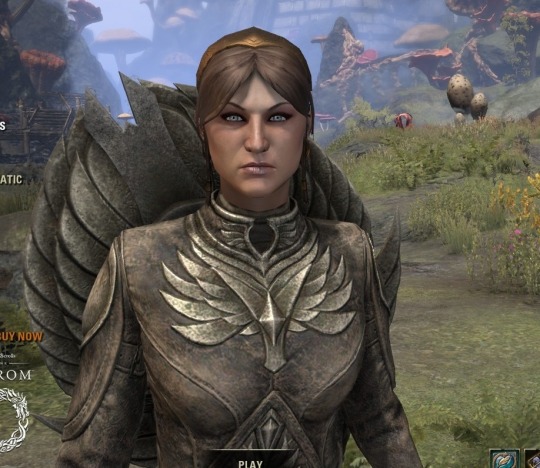
A granddaughter of the infamous Abnur Tharn, Patellia does her best to keep the peace in her tumultuous and long-reached clan. She's a very competent fighter in her own right, and having a lofty family name definitely helps out, but Patellia wants to have a chance to prove herself on her own. This was put on hold after grandfather dearest's involvement with the Planemeld. Which she then felt honor and family bound to help fix.
She's not seeing anyone at the moment, in fact romance is the last thing on her mind while she's busy cleaning up the various Tharn Clan messes and saving the world. Maybe some day.
#my ocs#oc lore#character lore#the elder scrolls#elder scrolls online#eso#vestige#the vestige#eso vestige#khajiit oc#nord oc#altmer oc#bosmer oc#breton oc#imperial oc#writing#eso ocs
9 notes
·
View notes
Text



PC: NA, Water’s Edge: Fenn’s Valentine
Tags: Cozy, Underconstruction
*Here’s the list of furnishings that I was not able to find.
- Candle on golden pedestal
- Kitchen towel
- Forks
- Red flowers ( Perhaps the same as it placed in Castle Mornard) substituted with Bouquet, Medium Dibella's
- Blue book
- Plants under white hosta
#eso screenshots#the elder scolls online#the elder scrolls#fennorian#fennorian ravenwatch#tanlorin#eso housing
6 notes
·
View notes
Text
To whom it may concern, this is my new band. This EP was self produced, from recording to mastering.
Art by Llueve Studio
https://www.instagram.com/llueve.studio?igsh=OXoxN294c2x3aDhw
5 notes
·
View notes
Text

im sorry the armor is nice i guess but the mornard colorscheme is so fucking funny why does it look like that. pee pants ass
3 notes
·
View notes
Text
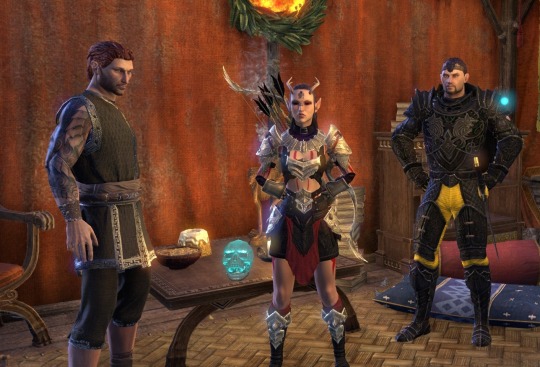
*buys a man*
Wit tha boyz
(Seriously though.. I need Fennorian as a HG.. I am MISSING him)
13 notes
·
View notes
Photo

Who the fuck picked this hideous color scheme for House Mornard’s armor and/or decided it was good enough to go with
#elder scrolls#teso#firesong#i don't claim to be particularly good at color theory#but these bitches have bright yellow drawing attention to their crotch and nowhere else
2 notes
·
View notes
Text
Bloodstained ice axe used to kill Trotsky emerges after decades in the shadows
On the evening of 20 August 1940, a man known as Frank Jacson called at a large house in the suburbs of Mexico City, and asked to see the ‘Old Man’ – as everyone called its celebrated resident, Leon Trotsky.
A few minutes later, the tip of the axe was buried more than two inches into Trotsky’s skull, becoming arguably the world’s most infamous murder weapon.
The axe was fleetingly displayed at a police press conference, but then disappeared for more than six decades.
Next year, however, the bloodstained relic will go on public display at Washington’s International Spy Museum, which will reopen in a new building to accommodate thousands of other artefacts that have emerged from the shadows.
The story of the ice axe is a convoluted one, befitting the extraordinary and macabre story of the Trotsky assassination. After the 1940 press conference, it was stored in a Mexico City evidence room for several years until it was checked out by a secret police officer, Alfredo Salas, who argued he wanted to preserve it for posterity. He passed it on his daughter, Ana Alicia, who kept it under her bed for 40 years until deciding to put it up for sale in 2005.
Trotsky’s grandson, Esteban Volkov, offered to give blood for a DNA test – but only on condition that Salas donated the weapon to the museum at Trotsky’s house, preserved intact from the time of the murder. Salas rejected the deal.
“I am looking for some financial benefit,” she told the Guardian at the time. “I think something as historically important at this should be worth something, no?”
The weapon was eventually bought by a US private collector, Keith Melton, a prolific author of books on the history of espionage, and a founding board member of the International Spy Museum. For the avid collector, who lives in Boca Raton, Florida, the ice axe had become something of an obsession.
“It was a search that took me 40 years, and up lots of blind allies and lots of misinformation,” Melton said. He doggedly tracked down every rumour, including one claiming the Mexican president was using it as a paperweight, until Salas emerged.
Melton would not disclose what he paid Salas for the axe. Contacted on Wednesday, Salas denied any knowledge of the sale. Trotsky’s grandson, Volkov, said he was unconcerned about the axe’s fate.
“Frankly, we are not interested in this,” he told the Guardian. “I never did the DNA test. I was not going to accept being part of a business deal for that woman.”
“It has no significance,” Volkov said. “It could have been a knife or a pistol. It doesn’t have any significance that it was a pick. And it was clumsily done, too.
“Who knows if it is the real axe?” he added.
Melton said he had authenticated the artefact beyond doubt and by several methods. There is a paper trail confirming that it passed into Salas’ possession. It bears the stamp of the Austrian manufacturer, Werkgen Fulpmes, a detail that was not made public; it is of the same dimensions as those recorded in the police report and it still bears the rust mark left by assassin’s bloody fingerprint, identical to the one in the photograph from the 1940 press conference.
Melton also believes he has also solved one of the enduring mysteries about Trotsky’s murder. Why, if the killer had an automatic pistol and a 13in dagger, did he resort to the ice axe?
Two sons of the 1917 Russian revolution, Trotsky and Joseph Stalin, were locked in rivalry that – by the nature of the two men – could only end in death.
Stalin approved a final plan for Trotsky’s assassination in 1939. It comprised two parallel plots: the first was a frontal assault, led by David Alfaro Siqueiros, the Mexican muralist who was also an agent for Stalin’s secret police, the NKVD.
On 24 May 1940 Siqueiros and a team of hitmen, dressed as policemen and soldiers, raked Trotsky’s house with more than 200 bullets, but the intended victim and his wife Natalia survived.
It seemed to be a miraculous escape, but proved to be only a short reprieve. A back-up assassination plot was already in motion.
Two years earlier, at the congress of Trotsky’s Fourth International in Paris, a lonely young New Yorker and ardent Trotskyite, Sylvia Ageloff, was introduced to a dashing 25-year-old called Jacques Mornard, supposedly the son of a Belgian diplomat.
His real name was Ramón Mercader, a Spanish communist whose mother, a loyal Stalinist, had put him up to the task of killing Trotsky.
Ageloff was persuaded to move to Mexico City to work for the Trotsky family. Mercader told her that to move with her, he would have to adopt a false identity to avoid being pursued for military service. He would go under the name of Frank Jacson (the NKVD forgers misspelled Jackson on his passport).
Ageloff accepted the explanation and the Trotsky entourage grew accustomed to see him drive her to the compound every morning.
On August 20 1940, Mercader was making his 10th visit to the house.
He told the guards he was planning to publish an article in a magazine and wanted Trotsky to look at the draft. Since the May attack, however, a new level of security had been introduced. There was a second door with a lock that was controlled from a guard tower. If Mercader was going to escape after killing Trotsky, the guards in the tower would have to let him out.
“The only chance he had was to kill him silently and then exit as a guest before they discovered the body,” Melton said.
A pistol would clearly not work in that case, and a dagger could not be guaranteed to kill Trotsky outright. By previous experience, the NKVD recommended blunt force to the back of the head to guarantee a completely silent death; to do the job Mercader stole the ice axe from his landlord’s son.
The axe is now among 5,000 artefacts that Melton is pledging to the International Spy Museum from his collection, which also includes a British one-man submarine used in second world war raids, and one of the plates used by the Nazis to forge perfect pound notes.
According to Melton, none of his treasures has quite the eerie presence of the ice axe. After letting Mercader into his study, Trotsky sat down to read his article, and the assassin attacked.
Trotsky let out a long scream and fought with his assailant until the guards arrived.
“I still remember looking through the open door and seeing my grandfather lying on the floor with his head bathed in blood and hearing him tell somebody to ‘keep the boy away, he shouldn’t see this’,” Volkov recalled on Wednesday. “I always thought that was a sign of his humanity. Even in a moment like that he was worried about me.”
Trotsky died of his wounds a little over 24 hours later in hospital. Mercader was put on trial and imprisoned for nearly 20 years.
During his time in jail, his Soviet handlers ensured he was as comfortable as possible, sending money each week and even arranging a girlfriend for him: a Mexican starlet called Roquella, who became his wife and accompanied him to Moscow after his release.
Mercader died of cancer in Cuba in 1978, with Roquella by his side. His last words are said to have been: “I hear it always. I hear the scream. I know he’s waiting for me on the other side.”
~
by Julian Borger (Washington), and Jo Tuckman (Mexico City) · 13 Sep 2017.
1 note
·
View note
Photo
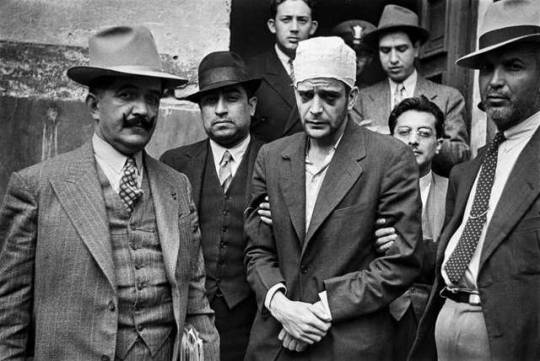
Lo zio di Christian De Sica e l’omicidio di Trotsky
«Era zio di mia madre, non proprio il tipo che inviti al pranzo di Natale. Era un aristocratico che ad un certo punto è diventato comunista. Poi l'hanno mandato in Messico ad ammazzare Trotsky. Ci hanno fatto anche un film: con Richard Burton che faceva Trotsky e Alain Delon nella parte di mio zio» C.De Sica
Jaime Ramón Mercader del Río Hernández è stato un agente segreto spagnolo naturalizzato sovietico. Nato in Spagna nel 1913, trascorse gran parte della sua gioventù in Francia con la madre Eustacia María Caridad del Río Hernández. Fin da giovane abbracciò le ideologie comuniste, cooperando con organizzazioni di sinistra spagnole verso la metà degli anni trenta. Venne anche imprigionato per attività politica e fu scarcerato nel 1936, quando in Spagna salì al potere un governo di sinistra. Nel frattempo, sua madre divenne agente segreto sovietico e lui la seguì a Mosca dove venne soprannominato dai suoi superiori "Gnome".
Iniziò dunque ad operare per il NKVD - Narodnyi kimissariat vnutrennich del, organo di polizia segreta dell'URSS, ramificato all'estero – dal quale venne incaricato di assassinare Lev Trockij (Trotsky), che diversi anni prima era stato esiliato dall'Unione Sovietica, ma continuava a fare propaganda contro il leader sovietico Stalin attraverso i suoi scritti in Messico.
«Che c'è ‘a rumba? Io sò frocio pa rumba!»
Mercader si trasferì quindi in Messico nell'ottobre del 1939, con un falso passaporto intestato al nome di Jacques Mornard e con la falsa occupazione di uomo d'affari, nato a Teheran da un inesistente diplomatico belga. Attraverso una segretaria statunitense di Trockij, Sylvia Ageloff, che aveva appositamente corteggiato a Parigi e che aveva poi seguito negli USA e in Messico, riuscì a venire a contatto con Trockij, spacciandosi per un seguace canadese delle sue idee politiche. Il politico russo era appena sfuggito, nel maggio del 1940, all'assalto armato organizzato dal celebre pittore David Alfaro Siqueiros, di tendenza staliniana.
Il 20 agosto 1940, Mercader ferì a morte Trockij, sfondandogli il cranio con una piccozza da ghiaccio dal manico tagliato, nella sua residenza a Coyoacán. Mercader fu ferito e quindi arrestato dalle autorità messicane, alle quali non rivelò mai la sua vera identità: tuttavia, venne condannato per omicidio a 20 anni di carcere.
«Quali che siano le circostanze della mia morte, io morirò con la incrollabile fede nel futuro comunista. Questa fede nell'uomo e nel suo futuro mi dà, persino ora, una tale forza di resistenza che nessuna religione potrebbe mai darmi.» L.Trotsky
«Un discorso molto poetico... Non c'ho capito un cazzo!»
Nel 1953 la sua vera identità venne scoperta ma i suoi legami con NKVD rimasero segreti fino allo scioglimento dell'Unione Sovietica. Il 6 maggio 1960 venne rilasciato dal carcere dopo diverse richieste di grazia. Si trasferì così a L'Avana dove fu accolto da Fidel Castro, che si era appena avvicinato all'URSS. Nel 1961 si recò in Unione Sovietica dove in precedenza il governo staliniano lo aveva insignito con la medaglia d'Eroe dell'Unione Sovietica, una delle più alte onorificenze della nazione: l'onorificenza gli fu successivamente revocata nel 1963 per ordine di Chruščëv.
Trascorse il resto della vita tra Cuba, la Cecoslovacchia e l'URSS. Morì a L'Avana nel 1978 a causa di un sarcoma e venne sepolto a Mosca nel cimitero di Kuncevo, dove tuttora si trova la sua tomba. Il fratello raccontò che Ramón presumibilmente morì a causa delle radiazioni emanate da un orologio da polso donatogli a Mosca dai vecchi compagni. Nell'orologio era stata nascosta una pastiglia di un radionuclide di tallio.
61 notes
·
View notes
Photo
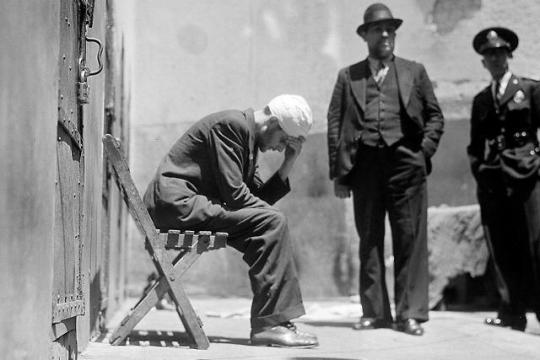
Ramon Mercader, aka Jacques Mornard and Frank Jackson, appears in a pensive mood on the roof of a police station in Mexico City after assassinating Leon Trotsky. August 27, 1940.[1300x867] Check this blog!
10 notes
·
View notes
Text

Sty and Kyro went to the All Flags Islet after helping House Mornard to deal with some Troublemakers on Galen. The two embraced eachother finally having some time to relax. Sty suggest to sail to the Gold Coast - he promised him a dinner and a dance.
0 notes
Photo

Les deux jeunes patrons de Bois Noble, Thibault Collard et Kevin Mornard, ont inventé Wood’dwich, un contenant pour sandwiches réutilisable.
L’Echo , article Olivier Samois.
0 notes
Text
10 ótimos filmes para ver na Netflix

Nada melhor que aproveitar o tempo livre descansando em casa e assistindo Netflix. Mas, com tantas opções no catálogo, pode ser difícil escolher um bom filme. Para ajudar na escolha, a Revista Bula reuniu em uma lista dez ótimos longas disponíveis no serviço de streaming. A seleção priorizou filmes de diferentes gêneros, mas que foram bem avaliados pela crítica e pelos usuários. Entre os destaques, estão “O Eleito” (2016), de Antonio Chavarrías; “Awaiting” (2015), de Daniela Fejerman; e “The Butterfly’s Dream” (2013), dirigido por Yilmaz Erdogan. Os títulos estão ordenados de acordo com o ano de lançamento.
Perfectos Desconocidos (2017), Alex de la Iglesia

O casal Afonso e Eva organiza uma reunião para amigos de longa data. O que seria apenas um jantar toma um rumo inesperado, quando eles têm a ideia de deixar os celulares destravados em cima da mesa durante um tempo. Dessa forma, as notificações e segredos de cada um seriam compartilhados com todos. Durante a brincadeira, esses amigos, que estão juntos por toda a vida, descobrem que na verdade não se conhecem.
Honra e Lealdade (2016), Alessandro Pepe

Durante a 2ª Guerra Mundial, Herschel é um soldado da elite do exército alemão. Após um acidente, ele é abandonado pelas tropas soviéticas e vaga pela mata até encontrar outro soldado, Dietwolf, que lhe conta como Hitler tem exterminado judeus. Dietwolf teme pela vida de sua mulher, Eleanor, que é judia. Quando Herschel volta para a Alemanha, vê Eleanor sendo morta pela polícia. Depois desse episódio, ele se questiona se a guerra realmente vale a pena.
O Eleito (2016), Antonio Chavarrías

Em 1937, Ramón Mercader, um jovem oficial espanhol, é recrutado pelo serviço de espionagem soviético para a maior e mais perigosa missão de sua vida, ordenada pelo próprio Stálin: assassinar Leon Trotski, considerado um traidor. Depois de seu treinamento na Rússia, Ramón é enviado para Paris, onde assume a identidade do belga Jacques Mornard. Na capital francesa, ele se apaixona por Sylvia, uma mulher que trabalha para Trotski.
Weeds on Fire (2016), Steve Chan Chi-fat

Lu Kwong-fai é diretor de uma escola no subúrbio de Hong Kong, famosa pela indisciplina dos alunos. Para transformar a realidade do colégio, Lu decide investir no esporte e convoca dez alunos para formar um time de beisebol, chamado Shatin Martins. Inexperientes, eles perdem todos os primeiros jogos, mas não desistem e continuam treinando. Em pouco tempo, se tornam o primeiro time de Hong Kong a ganhar uma liga.
Awaiting (2015), Daniela Fejerman

Natalia e Daniel, um casal espanhol, viajam para a Lituânia com a intenção de adotar uma criança. Mas, ao chegarem no país, se deparam com o descaso do governo, complicações burocráticas e intermináveis extorsões. A ansiedade e a tensão começam a prejudicar o relacionamento de Natalia e Daniel. Mesmo frustrados, eles não querem desistir do sonho de formar uma família.
Fronteira (2014), Michael Berry

Sonhando com melhores condições de vida, Miguel Ramirez decide entrar ilegalmente nos Estados Unidos. Na fronteira com o México, ele conhece Olívia, uma mulher americana que lhe dá água e comida para prosseguir a viagem. Horas depois, Olívia é assassinada e Miguel se torna o principal suspeito do crime. O mexicano é preso e sua mulher, Paulina, decide cruzar a fronteira sozinha para ajudá-lo.
Historias del Canal (2014), Abner Benaim, Carolina Borrero e outros

Inaugurado em 1914, o Canal do Panamá se tornou uma travessia importante para o comércio marítimo internacional. O filme aborda os 100 anos da história do canal, desde sua construção até os dias atuais. Os diretores mostram como a obra mudou a vida das pessoas, por meio de cinco histórias reais, intituladas “1913”, “1950”, “1964”, “1977” e “2013”.
Sonhos Imperiais (2014), Malik Vitthal

Bambi é um jovem de 21 anos que acabou de sair da prisão. Ele decide voltar ao seu antigo bairro, em Los Angeles, para encontrar o filho, que está sob os cuidados da avó. Ao retornar, ele recebe um inesperado convite para trabalhar como traficante. Bambi não tem nada e, para sustentar sua família, terá que escolher entre voltar para o crime ou ir atrás do sonho de ser um escritor.
The Butterfly’s Dream (2013), Yilmaz Erdogan

Em 1941, durante a Segunda Guerra Mundial, a Turquia passa por um período de fome e escassez. Os amigos Rüstü e Muzaffer são apaixonados por poesia e lutam para se tornar escritores. Além disso, eles são apaixonados pela mesma mulher: Suzan, a filha de um homem rico e influente na cidade. Mas, devido à crise econômica, os amigos são obrigados a trabalhar numa mina de carvão, onde acabam contraindo tuberculose.
Seabiscuit: Alma de Herói (2003), Gary Ross
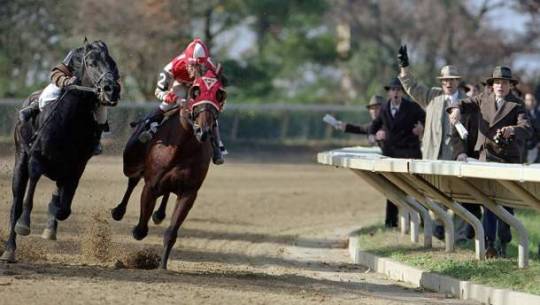
Durante a década de 1930, Charles Howard descobre uma nova paixão: cavalos de corrida. Como quer pagar pouco, ele compra Seabiscuit, um animal preguiçoso, que nunca teve destaque nas corridas. Para treiná-lo, contrata Tom Smith, um vaqueiro com incrível habilidade para se comunicar com cavalos. E, para montar Seabiscuit, George convida Red Pollard, um jóquei com histórico de derrotas. Juntos, eles transformam Seabiscuit em um famoso campeão.
Bônus
Cinema, Aspirinas e Urubus (2005), Marcelo Gomes

Em 1942, no sertão nordestino, dois homens vindos de mundos diferentes se encontram. Um deles é Johann, um alemão fugido da 2ª Guerra Mundial, que dirige um caminhão e vende aspirinas pelo interior do país. O outro é Ranulpho, um homem simples do sertão que, após ganhar uma carona de Johann, passa a trabalhar para ele como ajudante. Aos poucos, surge entre eles uma forte amizade.
10 ótimos filmes para ver na Netflix publicado primeiro em https://www.revistabula.com
0 notes
Text
Ducharme, le mythe
Est-ce que la prise de parole sur la sphère publique demande nécessairement d’accepter que sa vie privée soit accessible à tous et toutes?
Des journalistes ont appris en 1966 qu’un jeune auteur québécois de vingt-quatre ans allait être publié chez Gallimard. Tout le monde voulait immédiatement savoir qui était ce jeune prodige qui excellait chez nos cousins français. Mais Réjean Ducharme, grand rebelle, ne voulait pas se faire connaître. Tout le monde voulait le rejoindre pour une entrevue, mais celui-ci fuit les journalistes, changeant de domicile à tous les deux ou trois jours. Son ami Gérald Godin réussit à l’avoir en entrevue au magazine Maclean’s où il exprime son désir de rester incognito : « Ma famille dit déjà que je suis un écrivain, qu'il y a un écrivain dans la famille et que je vais être publié à Paris et je n'aime pas ça. Je ne veux pas que ma face soit connue, je ne veux pas qu'on fasse le lien entre moi et mon roman. Je ne veux pas être connu. [...] Je ne veux pas être pris pour un écrivain. » (Godin, 1966: 57)
Ducharme explique aussi dans cette entrevue qu’il avait envoyé un manuscrit au Cercle du Livre de France à Montréal, et que celui-ci avait été refusé par l’éditeur, Pierre Tisseyre. Mais ce manuscrit n’était pas celui de L’avalée des avalés (AA), le premier des romans publiés de Ducharme, plutôt celui de L’océantume. Pierre Tisseyre n’a pas aidé à dissiper le malentendu, en disant que le manuscrit a été largement changé entre sa lecture à lui et la publication chez Gallimard, alors que le seul livre publié à cette date demeurait L’avalée des avalés.
Lorsque la nouvelle sort que deux autre romans seront aussi publiés sous peu, soit Le nez qui voque et La fille de Christophe Colomb, le mystère sur cet auteur virtuose s’épaissit. Dès lors, des « amis » de Ducharme s’expriment dans les journaux en affirmant des choses plus ou moins véritables sur ses publications à venir. L’un serait un recueil de poèmes, l’autre aurait été considérablement édité par Gallimard avant la publication. Les rumeurs vont bon train, et alors, tous se demandent si ce ne serait un canular. L’avalée des avalés a un succès retentissant immédiat, on dit que c’est la « découverte du siècle », il a été lancé dans la course pour l’obtention du Prix Goncourt, on dit même qu’il aurait été retenu en vue du déjeuner final (dernière étape pour le Prix Goncourt).
Alors, en France, un journal d’extrême-droite lance la nouvelle que les photos de Ducharme mises en circulation sont celles d’un étudiant mort, et affirme que L’avalée des avalés est l’oeuvre d’un diplomate ou d’un universitaire. Le Quartier Latin, journal étudiant québécois, mène une enquête et compare la dernière page du roman, signée de la main de Ducharme, avec la signature d’Yvan Mornard, journaliste. Ils en viennent à la conclusion que c’est Mornard qui a écrit le livre.
Dans les Nouvelles littéraires, un article signé par Jean Montalbetti lance la nouvelle que derrière Ducharme serait plutôt l’écrivain Naïm Kattan. Le Devoir reprend même la nouvelle. Puisque Ducharme refuse de révéler son visage et son nom, il doit donc être un masque et un pseudonyme. Et puisque Ducharme en sait tellement sur la religion juive, il doit être juif. L’avalée des avalés a la maturité d’un homme qui est dans la quarantaine. Donc il doit s’agir de Naïm Kattan. Celui-ci aurait utilisé un pseudonyme afin de donner à la littérature canadienne-française un auteur juif. Puisque la littérature canadienne-anglaise a le sien.
C’est officiel, il faut élucider le mystère Ducharme. On le traque, on le cherche. Les journaux publient des entrevues avec sa famille, ainsi que des photos de l’album de famille. La radio d’État diffuse une émission d’une demi-heure en 1967 intitulée « Réjean Ducharme raconté par sa famille » et la télé de Radio-Canada diffuse une émission où s’expriment les parents de Ducharme. On veut absolument savoir pourquoi Ducharme refuse de sortir au public, à la presse.
La maison Gallimard envoie un professeur invité à l’Université de Montréal, Clément Rosset, rencontrer Ducharme en son nom. Celui-ci dit l’avoir rencontré, avoir vu le manuscrit, et qu’il n’y a pas de doute que L’avalée des avalés soit de lui. M. Rosset confirme le fait que Ducharme est un « Québécois de bonne souche ».
L’affaire semble réglée. Mais ça n’empêche pas le ministre des Affaires culturelles du Québec, Jean-Noël Tremblay, d’affirmer à Normand Lassonde, qui le décrit dans un article de La Patrie cité par Myrianne Pavlovic (1980), que les livres de Ducharme ont été complètement refaits avant d’être publiés et que Ducharme est un « adolescent attardé, un névrosé et un déséquilibré mental », que « ses livres n’ont aucune valeur littéraire et qu’au plus peuvent constituer des documents pour psychiatre ».
Il faut croire qu’il s’agissait d’une grave offense que de se retirer de la sphère publique.
Éventuellement, les gens ont laissé Réjean Ducharme tranquille, ont accepté qu’il demeurerait en retrait de la sphère publique. Et dès lors, le mystère autour de Réjean Ducharme demeure et persiste. Mais ce ne fut pas sans une bataille essoufflante de la part de l’auteur solitaire, qui a fait preuve du même acharnement que nombre de ses personnages pour demeurer libre.
La littérature se nourrit de mythes, et au Québec, notre mythe, c’est Réjean Ducharme. - Jacques Pelletier cité par Pascale Millot, 2000
0 notes
Photo
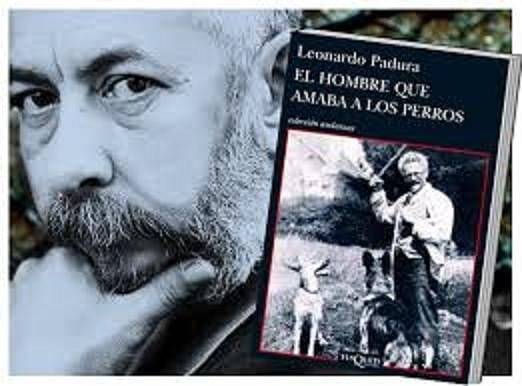
📚🦮🔖 #LeonardoPadura: #ElHombreQueAmabaALosPerros En 2004, a la muerte de su mujer, Iván, aspirante a escritor y ahora responsable de un paupérrimo gabinete veterinario de #LaHabana, vuelve los ojos hacia un episodio de su vida, ocurrido en 1977, cuando conoció a un enigmático hombre que paseaba por la playa en compañía de dos hermosos galgos rusos. Tras varios encuentros, «el hombre que amaba a los perros» comenzó a hacerlo depositario de unas singulares confidencias que van centrándose en la figura del asesino de #Trotski, #RamónMercader, de quien sabe detalles muy íntimos. Gracias a esas confidencias, Iván puede reconstruir las trayectorias vitales de #LievDavídovichBronstein, también llamado Trotski, y de Ramón Mercader, también conocido como Jacques Mornard, y cómo se convierten en víctima y verdugo de uno de los crímenes más reveladores del siglo XX. Desde el destierro impuesto por #Stalin a Trotski en 1929 y el penoso periplo del exiliado, y desde la infancia de Mercader en la Barcelona burguesa, sus amores y peripecias durante la Guerra Civil, o más adelante en Moscú y París, las vidas de ambos se entrelazan hasta confluir en México. Ambas historias completan su sentido cuando sobre ellas proyecta Iván sus avatares vitales e intelectuales en la #Cuba contemporánea y su destructiva relación con el hombre que amaba a los perros. (en Isla de la Cuarentena) https://www.instagram.com/p/CQG_1iNMHjZ/?utm_medium=tumblr
#leonardopadura#elhombrequeamabaalosperros#lahabana#trotski#ramónmercader#lievdavídovichbronstein#stalin#cuba
0 notes